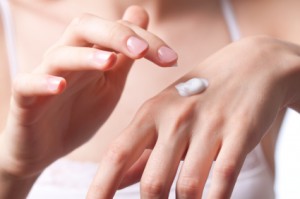Atopic Dermatitis in Adults: Causes and Treatment Options

Atopic dermatitis is an inflammatory skin condition characterized by itching, redness and dryness of the skin, sometimes with oozing and thickening of the skin. It is a chronic and common problem that is especially prevalent in dry climates such as in the Reno and Lake Tahoe area. Persistent itching of the skin, also called pruritus, is the predominant characteristic of this burdensome affliction. The principal causes of atopic dermatitis are skin barrier insufficiency and the body overreacting with inflammation. Triggers for atopic dermatitis flare-ups include heat, low humidity, stress, environmental allergies and food allergies, although the latter are less common with adults. In families whose members have allergies or asthma, one or more members is likely to develop atopic dermatitis, and those who do are also more likely to be hypersensitive to fragrances, preservatives, topical antibiotic preparations and to metals such as nickel.
While there are several recognized approaches to the treatment of atopic flares, it is essential to control the itching, restore what is called the skin barrier and reduce or eliminate the known triggers if possible. Unfortunately, due to the compromise of the skin barrier, secondary infections often occur. These infections are generally bacterial, but sometimes viral or fungal. When one is carefully avoiding triggers and appropriately treating the dermatitis but without improvement, it is likely due to a secondary infection which needs to be evaluated and treated medically by a physician.
Patients dealing with this irritating condition have to spend time everyday restoring the skin’s barrier with moisturizing creams and ointments. This should be done during flares and also when the condition is controlled in attempt to prevent flares. We recommend moisturizing at least twice a day with an over the counter cream, two options are CeraVe cream or Cetaphil cream. The first application of moisturizer is best to do just after showering in the morning while the skin is moist. Throughout the day if possible the cream should be applied again and especially to one’s hands after every hand washing. At bedtime an ointment such as Aquaphor is recommended for application from the neck down, then sleep in pajamas with long sleeves and pants to help the ointment absorb into one’s skin.
During a flare, the itching can be treated with antihistamines, many of which do not require a prescription and are conveniently available over the counter. During the day, non-sedating antihistamines such as Allegra, Claritin, and Zytrec are recommended. Patients need to know that the generic equivalents to these well- known medications can work just as well and are generally less expensive. For nighttime use, sedating antihistamines are a good treatment choice as they provide not only a reduction in the itching but are an effective sleep-aid for most patients. While prescription antihistamines are obviously an option also an option, for an over the counter bedtime antihistamine, Benadryl, also known as diphenhydramine, is the most commonly recommended.
The main treatment modality for treating the skin rash are topical anti-inflammatory preparations. For more intense outbreaks – and depending on the area of the body affected – either less or more potent prescription steroids will likely be prescribed. Finally, light therapy, which involves standing in a UVB light box, several times a week, can be helpful as an adjunct for stubborn disease.
Atopic dermatitis can be a challenging and frustrating condition to treat. When skin barrier restoration through moisturizer, topical anti-inflammatory and anti-itch medications do not resolve the skin rash, a daily diary should be kept to help identify one’s individual triggers. The patient should keep careful notes of everything, including foods and drink, exposure to environmental allergens, and stressful events that are or may be related to flares. This track record will assist their dermatology provider in understanding the patient’s triggers to the flares and thereby help in devising a plan to manage if not eliminate them. By way of a simple example, if seasonal pollens are a trigger for one’s atopic dermatitis, it may help to shower before going to bed, and to thoroughly wash the pollen from one’s hair so as to not be exposed to those allergens all night while sleeping.
Medical providers will occasionally refer patients to an allergist to identify specific environmental triggers, and sometimes allergy desensitization treatments are employed to lessen, or hopefully eliminate the body’s reaction to those triggers.
It is well known that stress and anxiety are difficult to manage and their association with atopic dermatitis is sometime a vicious cycle, with causing a flare and the outbreak leading to frustration and more stress. There are many recommended ways to reduce stress, however; regular exercise and plenty of sleep are considered the most important. Patients should discuss with their providers their own particular lifestyles and possible causes of their tension and stress so that their providers can suggest individualized stress management strategies.
In conclusion, atopic dermatitis is a frustrating condition that is usually life-long, with intermittent flares, minor and major, but it is not cause for despair because the outbreaks are decidedly manageable. With the help of your dermatology provider and possibly an allergist, those who are afflicted can lead normal, healthy and comfortable lives.
For more information or to set up a consultation with Dr. Jennifer
Janiga regarding Atopic Dermatitis treatments in our Reno dermatology offices, please send us an email or call 775-398-4600.


